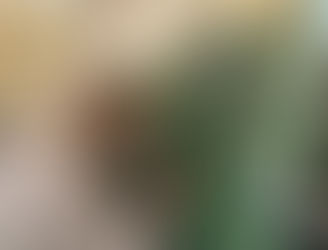Journey to the Origins: Reflections on Aboriginal Art
- Karena de Pont

- Jul 31, 2024
- 2 min read

Last month, I found myself standing in front of an Aboriginal rock art painting in Kakadu National Park, Northern Territory, Australia. I was deeply moved by the images before me. While we often encounter rock art in books and TV programmes, standing there in person, I had an epiphany: as an artist, I was witnessing the origin of art. What is an artist but someone trying to make sense of their world by creating an artwork. Especially so, in times when there was no written word. Thousands of years later after the time of these original rock artists, artists in general are still striving to make sense of our world through our artmaking.
Looking at these rock art images of animals, people, and country, I reflected on how some would perceive these images as unsophisticated abstract works rather than representational art, akin to the pieces that hang on gallery walls made by artists in the western tradition. However, in my view, these early rock art images are highly representational rather than abstract work. The subject matter is detailed, informative, and easily recognizable. Considering the materials and resources available to the original artists—a bumpy, rocky surface, ground-up natural pigments, and sticks to create these works—it’s amazing that we can still enjoy them today considering their outdoor setting and exposure to the elements.
Aboriginal art has evolved as well especially in the last century. The availability of materials such as canvas, brushes, and modern paints has allowed Aboriginal artists to move on from the origins of rock walls and painting their bodies to articulate their stories and Dreaming into the colourful 'dot or cross-hatching' paintings familiar to lovers of abstract art. There are many Aboriginal artists in the Northern Territory today, and I highly recommend visiting a local gallery to see the artists' making their work firsthand. Since the adoption of canvas and board as surface supports in the past 50 years, contemporary Aboriginal art is full of variety and styles that differ in character depending on the artist's region and language. Most contemporary art can be recognized by the community it was created in, as Aboriginal artists inherit the rights to their stories, which are passed down through generations within certain skin groups—they cannot paint a story that does not belong to them through family.
Outside the town of Katherine, Northern Territory, I visited Top Didj & Art Gallery and saw highly abstracted contemporary aboriginal works alongside more traditional pieces, each worthy of celebration and appreciation. I also really enjoyed seeing some of the collections of Aboriginal art held by public galleries.

Above: My favourite painting was BUSH YAM DREAMING by Jeannie Mills Pwerle at Top Didj & Art Gallery, Northern Territory.
Below: Queensland Art Gallery, Brisbane had an extensive collection of contemporary aboriginal artwork on display.













































































































Comments